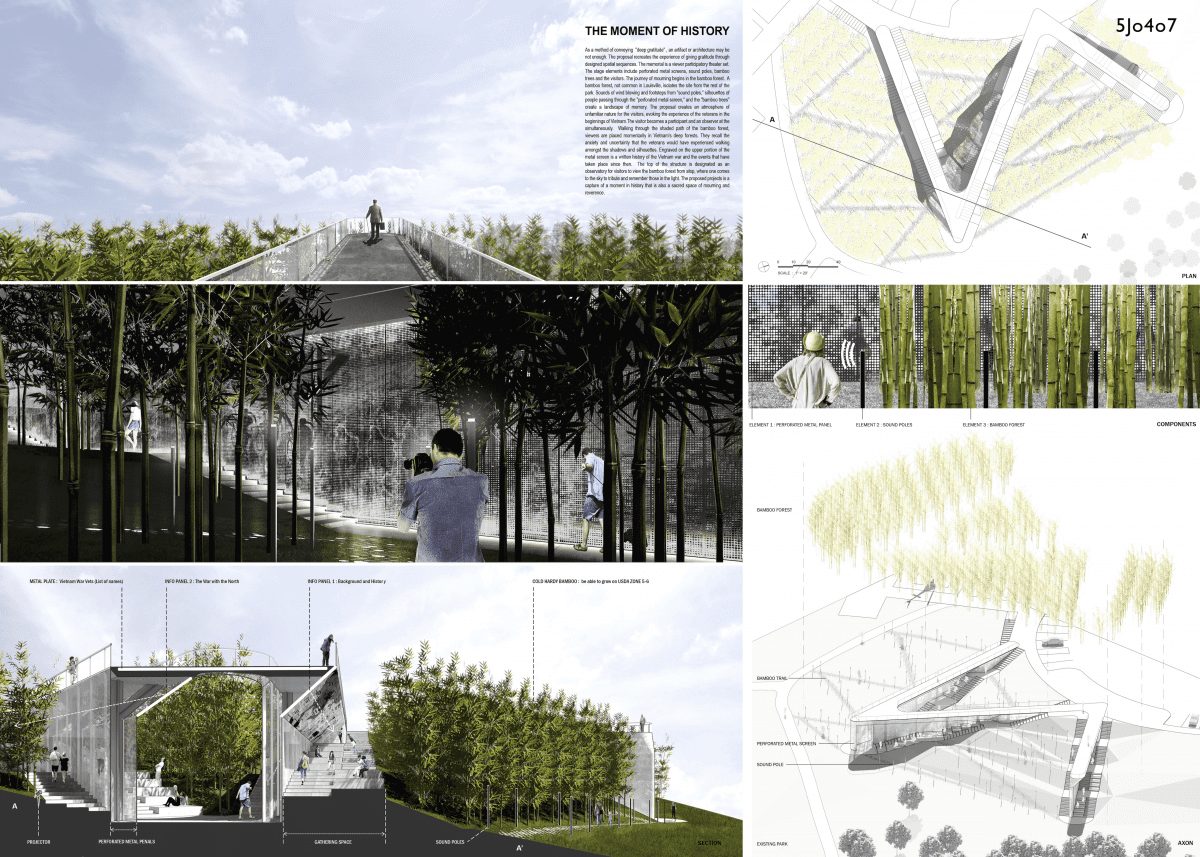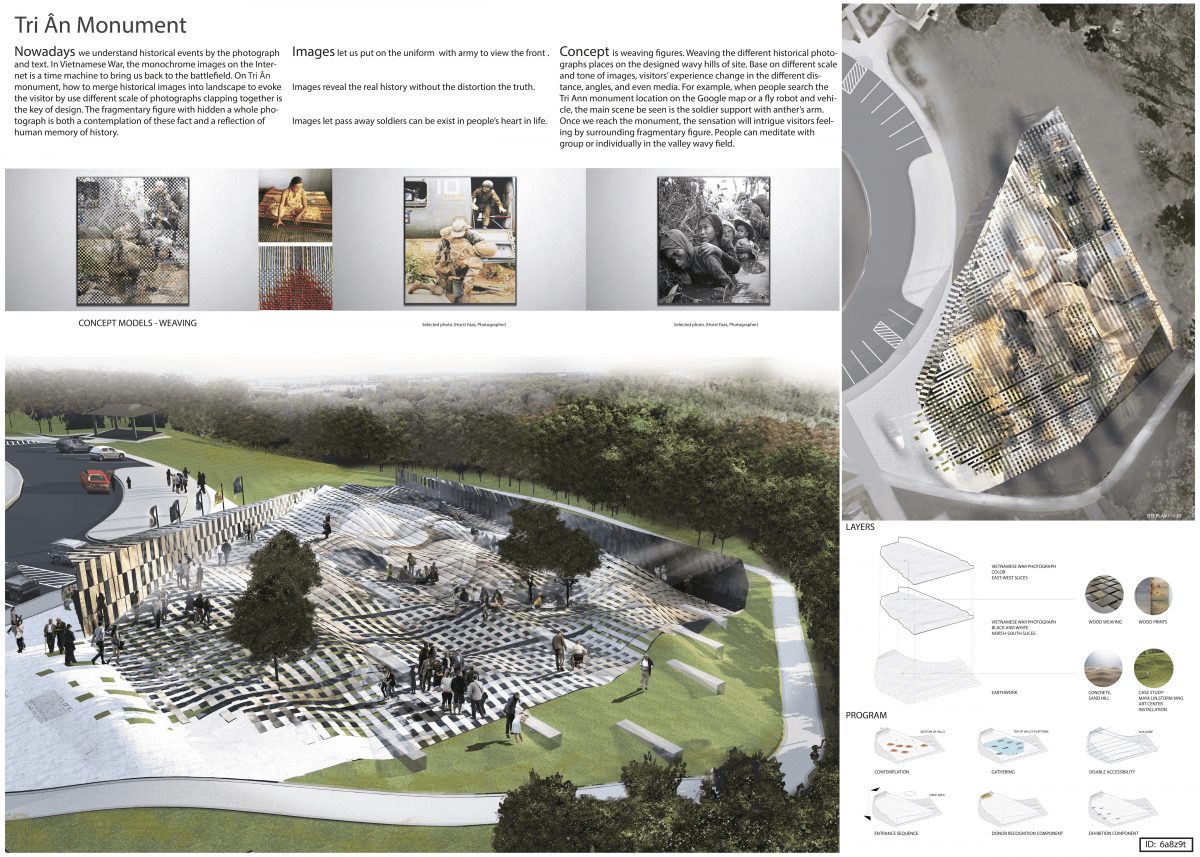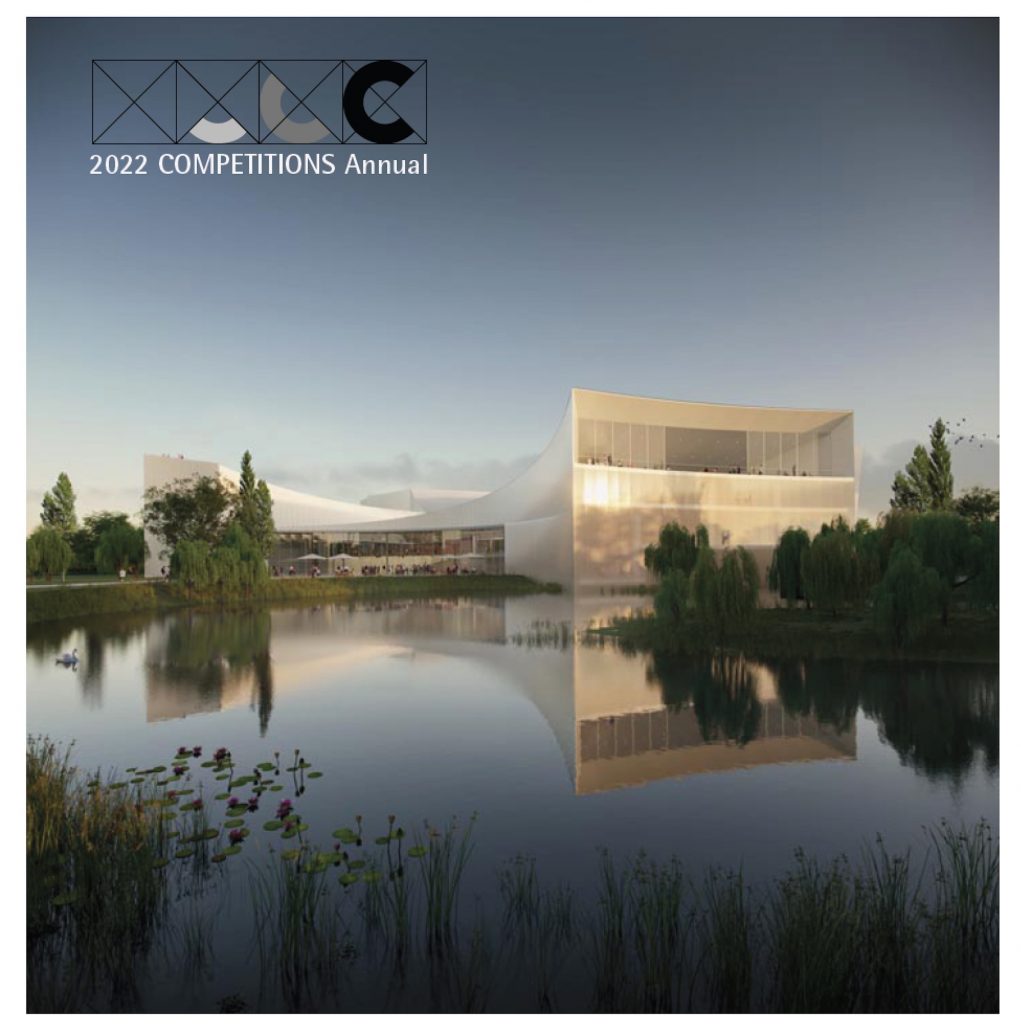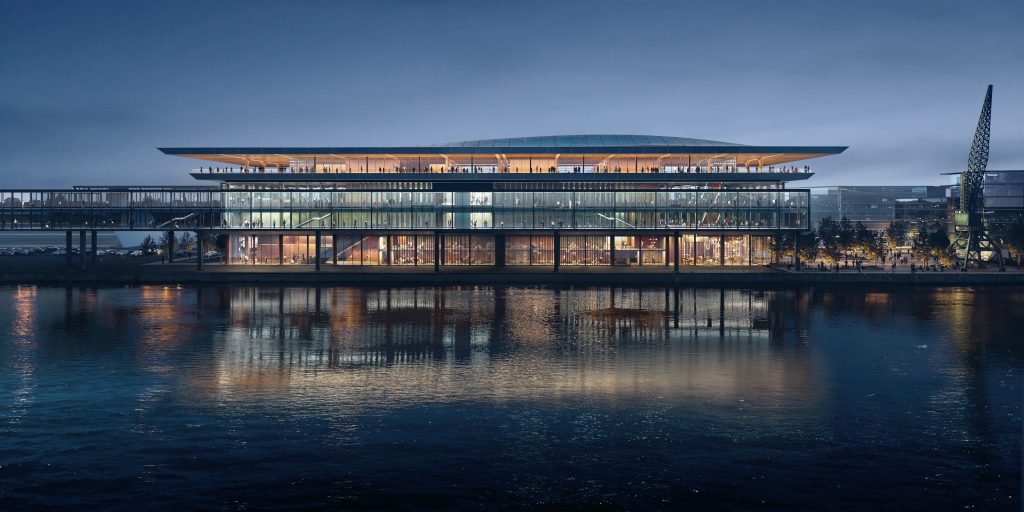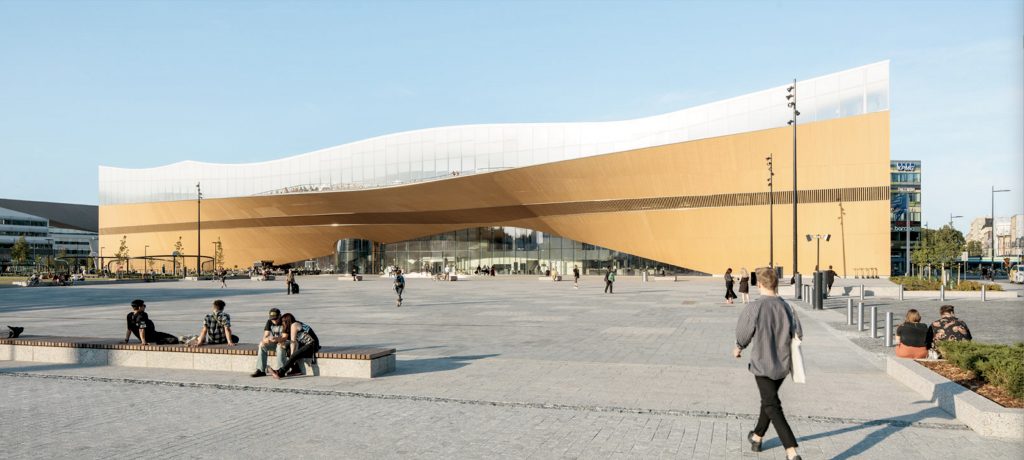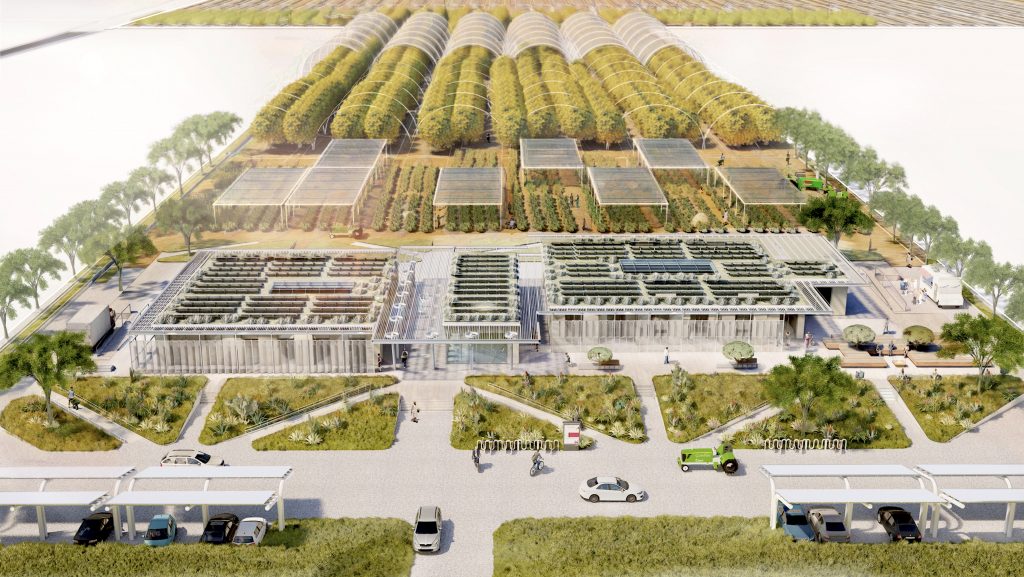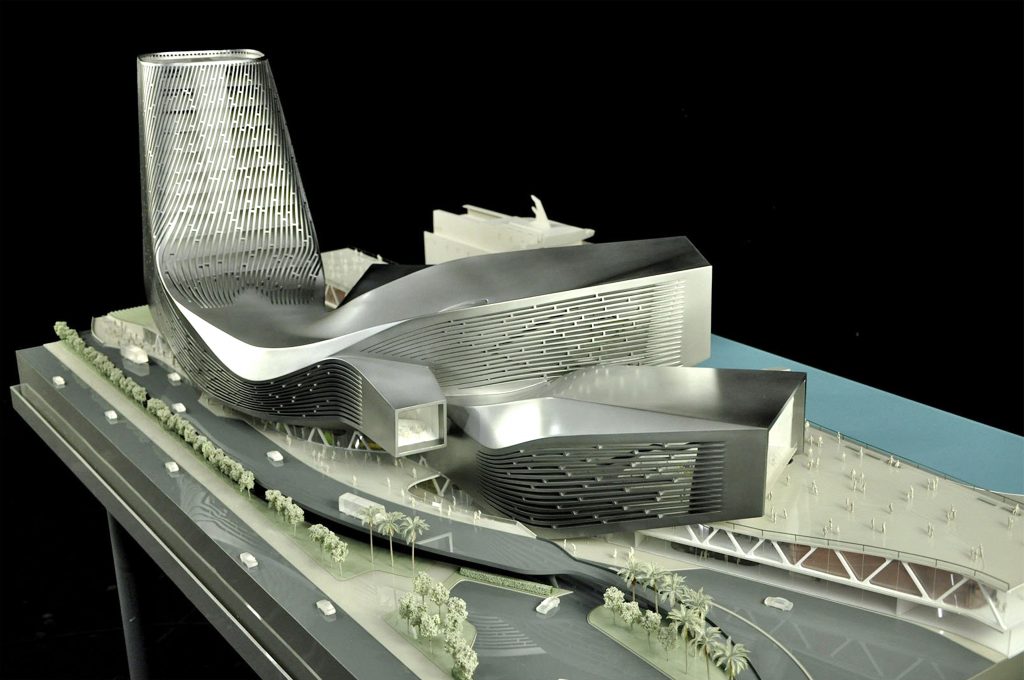For residents of Louisville, Kentucky, it would come as no surprise that the city’s Vietnamese community would support a competition commemorating the friendship and support of the Americans both in Vietnam and the U.S. and our welcome for the Vietnamese people who have arrived in this country. The foundation established to realize this concept was named “Tri An,” which means “deep gratitude.” According to the competition brief, “It is important to recognize the numerous humanitarian efforts and good deeds done by the U.S. military and the many Americans who went far beyond the call of duty to help the South Vietnamese people.
As is the case with many non-government supported projects, this one also had a patron who lent his support to project, Yung Nguyen, the local founder and patron of the Tri Ân foundation, also the founder of a high-tech firm. To administer the competition, the foundation engaged the services of a local architecture firm, Bravura, which had a notable track record in memorial competitions, having previously acted as professional adviser for the acclaimed Patriots Peace Memorial competition in Louisville.
In setting the bar for the anticipated winner, the competition brief stated that the design:
- Be unique;
- Be dramatic, timeless, and contemplative;
- Have many levels of meaning;
- Have the seductive power to invite a closer look, even to the casual observer;
- Be in harmony with the landscape, and be compatible with the other features and uses of the park in which it will reside;
- Be a creative use of the hillside site; incorporating its views, topography, and natural wooded backdrop;
- Successfully convey the Overriding Purpose and Interpretive Themes stated in these Guidelines.
To attract the widest possible audience, the organizers decided on an international, open and anonymous, two-stage competition as the best model. It was decided to award three finalists the opportunity to have their designs equally reviewed for the possible realization of the project in a second phase. For their efforts, each was to receive compensation of US $4,000.
To adjudicate the process, a four-person jury was empaneled:
• Susan Rademacher, FASLA
Landscape Lecturer, Writer, Curator, Consultant & Designer
• Yung Nguyen
Immigrant, Successful Entrepreneur & Founder of the Tri Ân Foundation
• P.Q. Phan
Composer, Educator & Professor of Music at Indiana University
• David M. Biagi
Architect & former Director of the University of Kentucky School of Architecture
Of the 128 entries this event attracted from around the world, the choice of the three finalists and ten honorable mentions certainly illustrated the international character of this competition:
Finalists – ($4,000 each)
• Grega Vezjak, Architect (Winner)
Bilje, Miren-Kostanjevica, Slovenija
• David Chisholm
CMC Architects, Prague, Czech Republic
• Jordan Hines, Informal Office, llc, Lexington, KY USA
Honorable Mentions
• Young Song, Buffalo, New York
• Yongwon Kwon, New York, NY
• Yi-Chen Lee, Taipei, Taiwan
• Rob Kiester, Denver, Colorado
• Tommy Haddock, San Francisco, California
• Palita Simapaisal, Bangkok, Thailand
• Tom Lucey, Perth, Australia
• Justin Arleo, Chandler, Arizona
• Anh Nguyen, Riverside, California
• Tianyu Wu, Athens, Georgia
The Final Selection Process
The three premiated finalists were submitted to a review by the Tri Ân foundation, assisted by the competition adviser, James Walters. In the final evaluation process, it was determined that the very expressive entry by David Chisholm of CMC Architects had to be eliminated from consideration because it well exceeded the announced budget of $850,000 by almost $350,000. As a result, the entry by Grega Vezjak of Slovenia was a unanimous choice for the realization of the project. It should be noted that the jury’s choice of Vezjak matched that of the jury from the high-profile 2015 Christchurch Earthquake Memorial Competition in New Zealand, also won by the Slovenian architect over 340 entries from around the world. That memorial is slated for its dedication in February.
Winning Entry
Grega Vezjak, Architect
Bilje, Miren-Kostanjevica, Slovenija
Finalist
David Chisholm, CMC Architects
Team Members: Vít Máslo + Adria Ferrer
Prague, Czech Republic
Finalist
Jordan Hines, Informal Office, llc
Team member: Erin Ruhl
Lexington, KY USA
Honorable Mentions
Jin Young Song
Buffalo, NY USA
Yongwon Kwon
New York, NY
Yi-Chen Lee
Taipei, Taiwan
Rob Kiester
Denver, CO USA
Tommy Haddock
San Francisco, CA USA
Image ©Tommy Haddock
Palita Simapaisal
Bangkok, Thailand
Tom Lucey
Perth, Australia
Justin Arleo
Chandler, AZ USA
Anh Nguyen
Riverside, CA USA
Tianyu Wu
Athens, GA USA










































